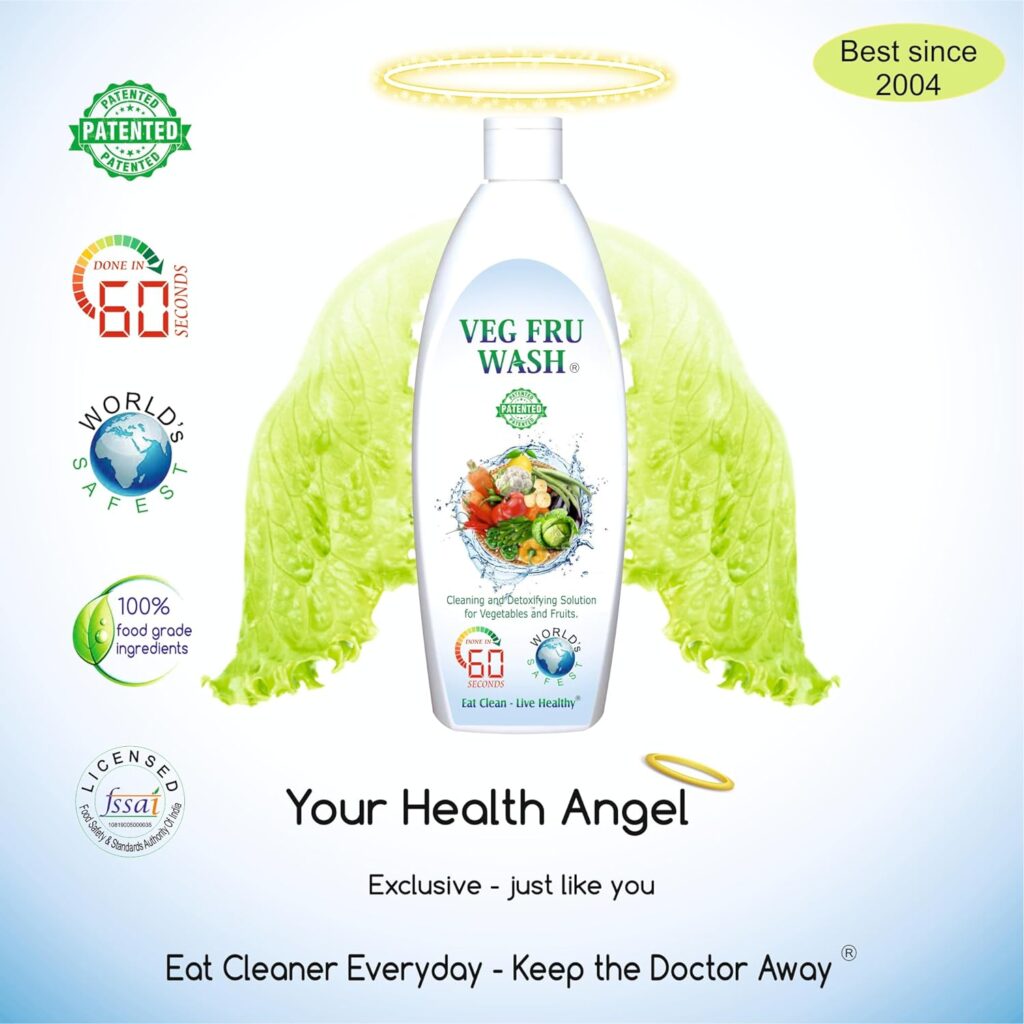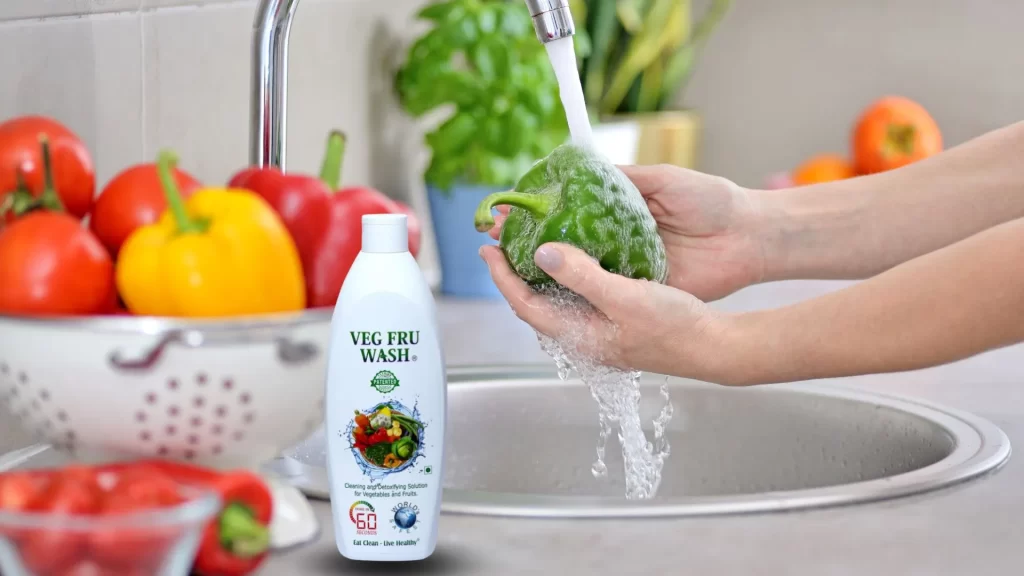
Vegetables are an essential part of a balanced diet, providing vital nutrients, fiber, and antioxidants. However, the journey from farm to table exposes them to various contaminants, including pesticides, bacteria, and dirt. A vegetable cleaner is an indispensable tool in ensuring that your produce is safe, clean, and healthy. This blog will delve into the reasons for using a vegetable cleaner, the benefits it offers, and how to effectively use it to wash your vegetables.
Why Use a Vegetable Cleaner?
-
- Reduction of Pesticide Residues: Vegetables are often treated with pesticides to protect them from pests and diseases. These chemicals can leave residues on the surface, which can be harmful if ingested. A vegetable cleaner is formulated to break down and remove these residues more effectively than water alone.
-
- Elimination of Bacteria and Pathogens: Contamination with harmful bacteria and pathogens such as E. coli, Salmonella, and Listeria can occur during various stages of production and distribution. A vegetable cleaner helps eliminate these microorganisms, reducing the risk of foodborne illnesses.
-
- Removal of Dirt and Debris: Fresh vegetables can harbor dirt, sand, and other physical contaminants. A vegetable cleaner helps remove these elements, ensuring that your produce is clean and more appealing to eat.
Benefits of Using a Vegetable Cleaner
-
- Enhanced Cleaning Efficiency: Compared to rinsing with water alone, a vegetable cleaner is designed to penetrate and remove a broader range of contaminants, including pesticides, bacteria, wax, and dirt.
-
- Improved Taste and Texture: Clean vegetables taste better and have a more appealing texture. By removing contaminants, a vegetable cleaner helps you fully enjoy the natural flavors of your produce.
-
- Health Assurance: Knowing that your vegetables are thoroughly cleaned provides peace of mind. You can feel confident that you are minimizing the risk of exposure to harmful substances and providing safe, nutritious food for your family.
How to Use a Vegetable Cleaner Effectively
-
- Choose the Right Product: Select a vegetable cleaner specifically designed for cleaning vegetables. Look for products that are natural, non-toxic, and free from harmful chemicals.
-
- Follow Usage Instructions: Each product may have specific instructions for use. Typically, you will need to dilute the cleaner in water or spray it directly onto the vegetables. Follow the recommended guidelines for the best results.
-
- Soak and Scrub: For vegetables with tougher skins, such as potatoes and carrots, soak them in the cleaner solution for a few minutes and then scrub with a vegetable brush. This helps remove stubborn dirt and contaminants.
-
- Rinse Thoroughly: After using the cleaner, rinse the vegetables thoroughly under cold running water. This helps remove any remaining residues from the cleaner itself.
-
- Dry Properly: After washing and rinsing, dry your vegetables with a clean cloth or paper towel. This step helps remove any lingering bacteria and reduces moisture that can promote bacterial growth during storage.
Specific Tips for Different Types of Vegetables
-
- Leafy Greens: Separate the leaves and rinse them individually after soaking in the cleaner solution. This ensures that all parts of the greens are thoroughly cleaned.
-
- Root Vegetables: Scrub root vegetables like beets, carrots, and potatoes with a brush after soaking. This helps remove embedded dirt and contaminants effectively.
-
- Cruciferous Vegetables: Soak vegetables like broccoli and cauliflower in the cleaner solution to remove dirt and insects hiding in the crevices. Rinse thoroughly afterward.
-
- Herbs: Fresh herbs can also carry dirt and bacteria. Rinse them under cold running water after soaking in the cleaner solution and pat them dry with a clean cloth or paper towel.
Additional Considerations
-
- Organic Vegetables: Even organic vegetables can benefit from a thorough wash to remove dirt, bacteria, and any residual organic pesticides.
-
- Homemade Cleaner Solutions: If you prefer a DIY approach, you can create your own vegetable cleaner solution using natural ingredients such as vinegar, lemon juice, or baking soda. However, be sure to rinse thoroughly to remove any remaining solution.
-
- Frequency of Washing: Make it a habit to wash all vegetables before consumption, regardless of whether they will be eaten raw or cooked. This ensures maximum cleanliness and safety.
Conclusion
Using a vegetable cleaner is a vital step in ensuring the safety and quality of your produce. By effectively removing pesticides, bacteria, wax, and dirt, you can enjoy cleaner, healthier, and more delicious vegetables. Make it a part of your routine to wash all your vegetables thoroughly, and enjoy the peace of mind that comes with knowing your food is safe and nutritious.

